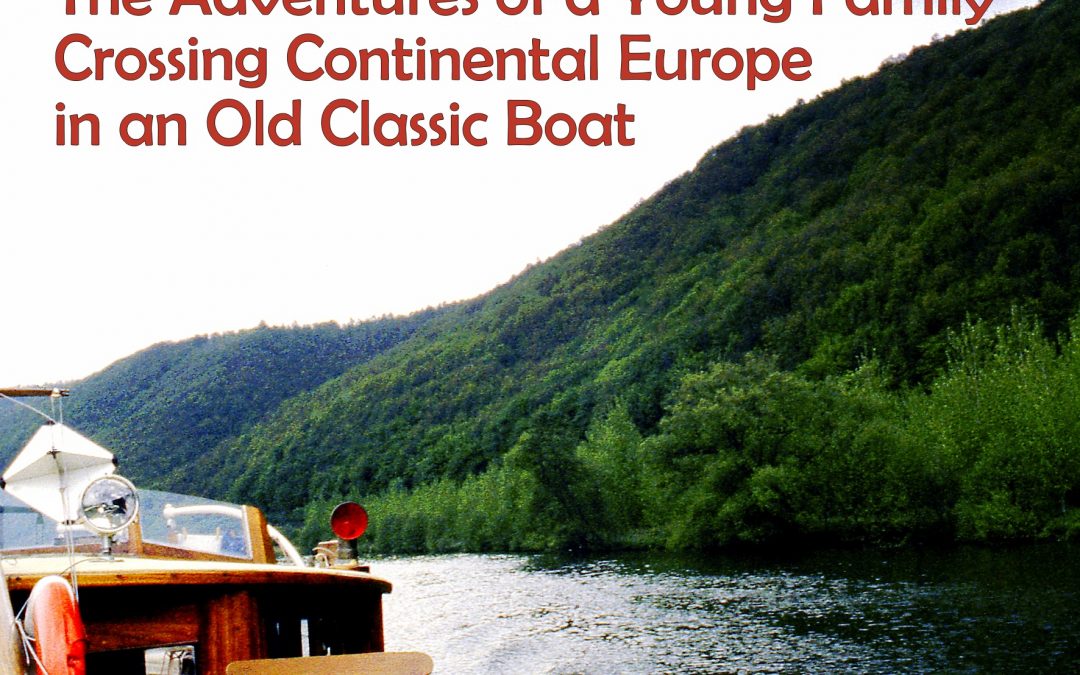
Mag 3, 2021 | The Blog
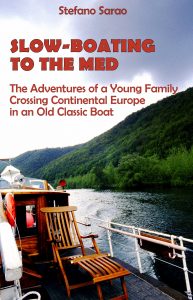 Four years ago, I wrote here about my love story with a classic boat, the Wairakei II, and about the weeks my family and I spent on board when we sailed her through Europe, from north to south.
Four years ago, I wrote here about my love story with a classic boat, the Wairakei II, and about the weeks my family and I spent on board when we sailed her through Europe, from north to south.
What I failed to mention was that I had kept a ship’s log, taken scores of pictures, and saved charts and documents about my Channel crossings and trip to Italy through the inland waterways of Belgium and France.
Not only that, I had amassed hours of video footage!
Unfortunately, having moved houses (and countries) several times since the early 90s, this treasure trove of information lay somewhere in a packing box—or more likely in more than one.
The ship’s log was the first item to surface, entirely by accident, as I was looking for something else. I just couldn’t believe I had found my journal and I went through it more than once, reminiscing about those events that had transpired three decades prior.
Many episodes I had forgotten turned into vivid images the moment I read my log entries that described them.
This find spurred me to look for the rest of the material, which I eventually did and, quite incredibly, it was all there!
I then came up with a plan, the first phase of which was to gather the material for one or two videos.
In trying to convert the old VHS tapes into mp4 files, my friend who has the necessary equipment ran into some trouble, but we eventually managed to extract everything.
The quality is what you would expect from VHS tapes of 30 years ago, but it’s still more than acceptable.
So I moved on to Step 2 of my plan. I wrote a book called Slow-Boating to the Med. (The Adventures of a Young Family Crossing Continental Europe in an Old Classic Boat) and published it on Lulu.com.
While I was writing my book, I also put together two YouTube videos, one dedicated to our Channel crossing to Dunkirk in 1990, and the other to the actual boat trip through Europe.
Now I believe I have finally done justice to my old boat and those epic days.
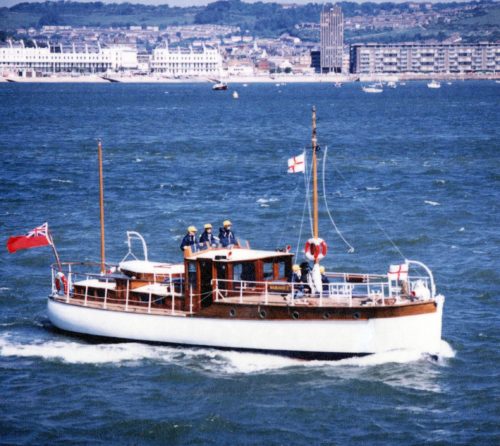
Lug 29, 2017 | The Blog
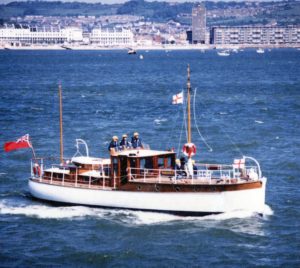
June 1990, the 1932-built Wairakei II leaves Dover headed to Dunkirk for the 50th anniversary of the WWII event.
The movie Dunkirk opened last week and instantly became a box office hit.
It’s by no means the first movie dedicated to the British Expeditionary Force’s evacuation from Northern France in June 1940 but it’s certainly the most colossal ever made.
I actually have a personal connection with Dunkirk and it’s through a boat.
When I lived in the UK at the end of the Eighties, I bought an old 52-foot motoryacht—the Wairakei II—that had taken part in the Dunkirk epic.
The Scottish-built Wairakei II was in sound shape but needed tons of cosmetic work. Among the horrors perpetrated on such a classic yacht was a stainless-steel bow pulpit, which replaced the original cast-iron anchor davit that some previous owner had simply scrapped. Likewise, the two dinghy davits were gone and, in lieu of the required mahogany dinghy, there was a sorry, half-deflated, sun-bleached rubber boat lying on deck.
I scoured the boat-breaker yards in Portsmouth until I found an anchor davit and two dinghy davits that would fit and looked like the originals. I also bought a 1940s mahogany dinghy to carry on deck.
It took me six months to bring the boat back to her original splendor, six months of scraping, buffing, lacquering and repainting. At the time, I hadn’t realized what I was getting into and what it would eventually cost, but it’s been an exciting project even though it nearly bankrupted me.
My self-inflicted ordeal ended in early June 1990, when the Wairakei II—together with 70-odd boats that had also taken part in the evacuation—sailed back across the English Channel for the fiftieth anniversary of the historic event.
On the day of the crossing, the weather was fine but the sea pretty choppy. Many of the old boats had trouble managing an average speed of 5 knots and the Royal Navy had one heck of a time escorting us across one of the world’s busiest shipping lanes. “Like walking a bunch of pedestrians across the M25”, said a Navy officer.
It took us the best part of the day to cover less than 50 nautical miles and the had already set when we entered the lock leading to the Dunkirk inner harbor. Hundreds of people lined the quays in the blustery evening and there were even Breton bagpipes welcoming us in.
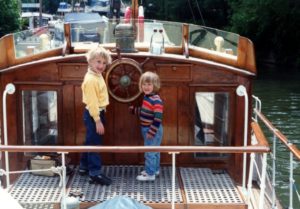 A year later, I moved to Brussels and took the Wairakei II with me and moored her at the BRYC (Brussels Royal Yacht Club). In 1992, when I moved back to Italy, I sailed the boat through the Belgian and French canal network to the Mediterranean.
A year later, I moved to Brussels and took the Wairakei II with me and moored her at the BRYC (Brussels Royal Yacht Club). In 1992, when I moved back to Italy, I sailed the boat through the Belgian and French canal network to the Mediterranean.
I can actually boast having sailed a boat to elevation 1300 feet, which is the highest altitude reachable through the lock system of the French Canal de l’Est. (The photo on the left shows my children, Rob and Laura, on the Wairakei II’s flying bridge in Weybridge, Surrey.)
I eventually entered the Mediterranean at Le Grau du Roi, in the Camargue and it was a warm summer day when the Wairakei II become acquainted with real waves once again.
Back to Dunkirk, the movie.
I hoped for a moment my old boat (which I eventually sold in 1993) would be featured in the film, but they apparently picked another yacht (they christened it Moonstone in the movie), which in real life is the Revlis. Curiosly, the real 1939-built Revlis did not take part in the Dunkirk evacuation but came from the same Scottish boatyard that built my old Wairakei II, James A. Silver of Rosneath.
The last time I walked on the Wairakei II‘s deck was in 1993, when I showed her to a young British shipwright who eventually bought her. But I’ve never stopped loving that majestic old lady and the very mention of the name ‘Dunkirk’ still sets my heart aflutter.

 Four years ago, I wrote here about my love story with a classic boat, the Wairakei II, and about the weeks my family and I spent on board when we sailed her through Europe, from north to south.
Four years ago, I wrote here about my love story with a classic boat, the Wairakei II, and about the weeks my family and I spent on board when we sailed her through Europe, from north to south.


